Treatment of Choking for Adults, Children, & Infants
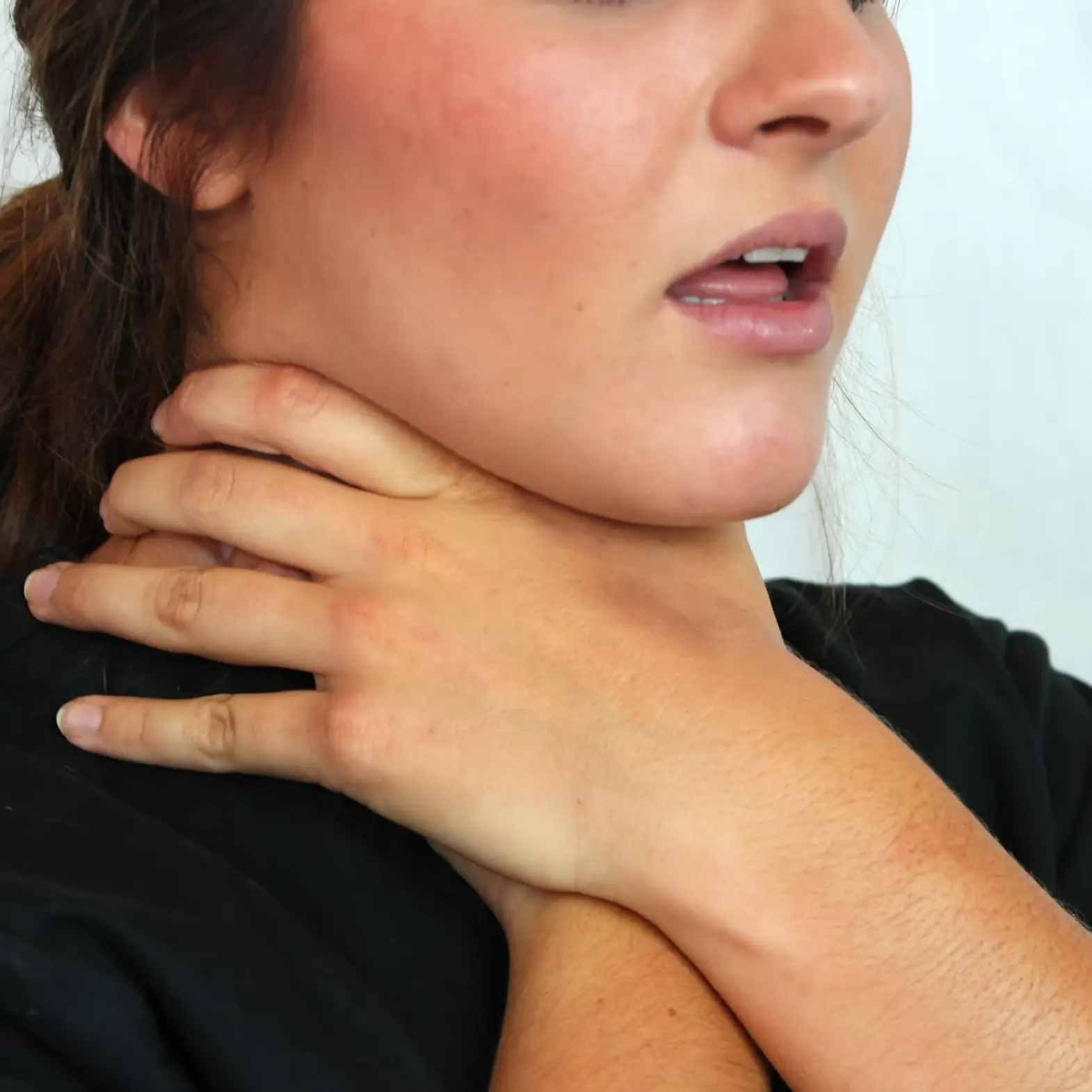
Figure 15
A common cause of cardiac arrest that is ultimately avoidable is choking. The right reaction to a choking person is dependent on the intensity of airway obstruction, whether or not the patient is responsive, and how old the patient is. Study Table 3 for actionable responses for dealing with choking adults and children.
Choking In Adults And Children
| Degree of Obstruction | Person's Response | Rescuers Action |
|---|---|---|
| Mild Obstruction |
|
|
| Severe Obstruction |
|
|
Table 3

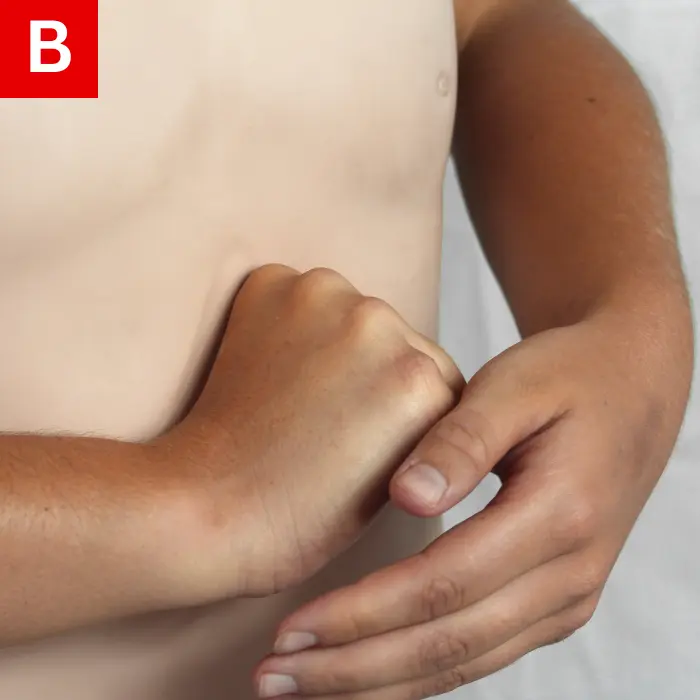
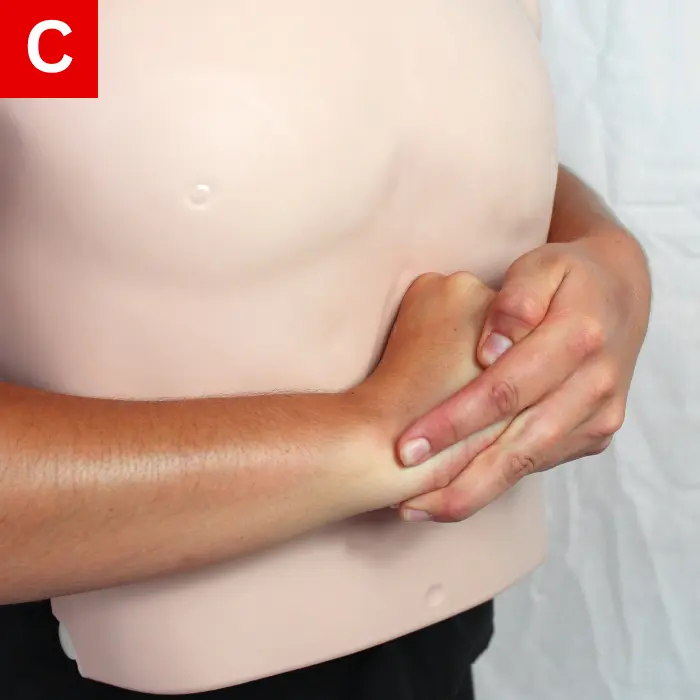
Figure 16: Abdominal
Thrusts
Abdominal Thrusts
People who are responsive or who are older than one year of age should be the exclusive recipients of abdominal thrusts.
To successfully execute abdominal thrusts, complete the following steps:
- Place yourself behind the person. Place both arms around the person’s waist and under the ribcage.
- Place the side of your fist above the person’s navel in the middle of the belly. Refrain from pressing on the lower part of the sternum (Figure 16a).
- With your free hand, hold the first fist and press onto the person’s abdomen and up toward their chest forcefully (Figure 16b and 16c).
- Continue executing the maneuver until the situation is stabilized or until the person starts becoming unconscious.
In the event that you see a foreign object in an individual’s mouth, do not hesitate to remove it. Observe the patient’s breathing patterns. If the person does not breathe, proceed to providing CPR and rescue breaths until further assistance arrives.
Choking in Infants
| Degree of Obstruction | Infants's Response | Rescuers Action |
|---|---|---|
| Mild Obstruction |
|
|
| Severe Obstruction |
|
|
Table 4
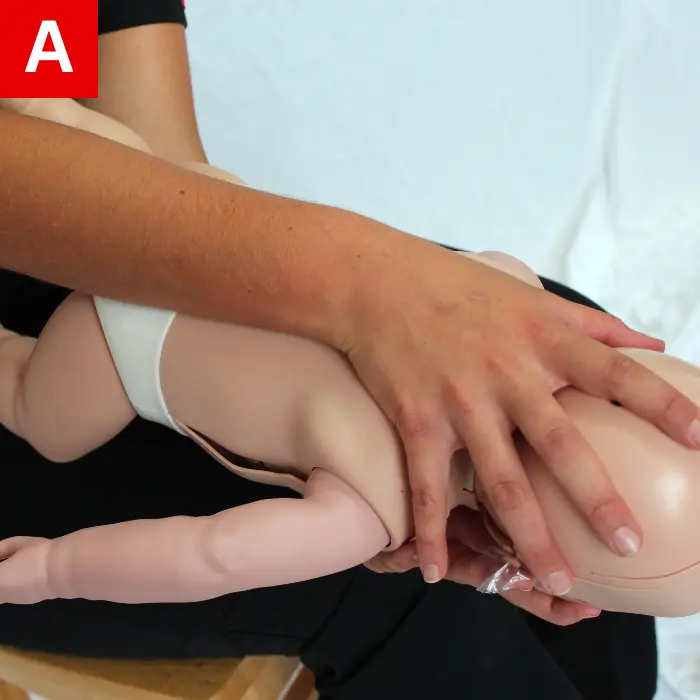
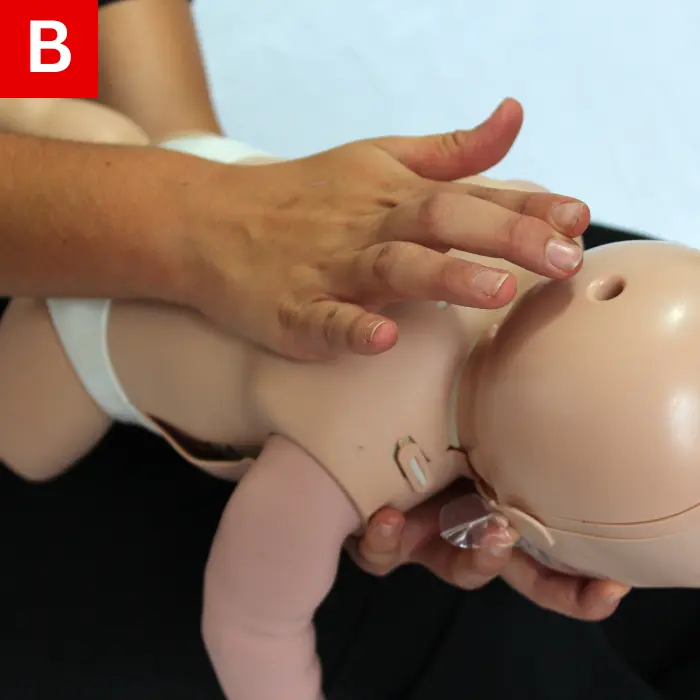
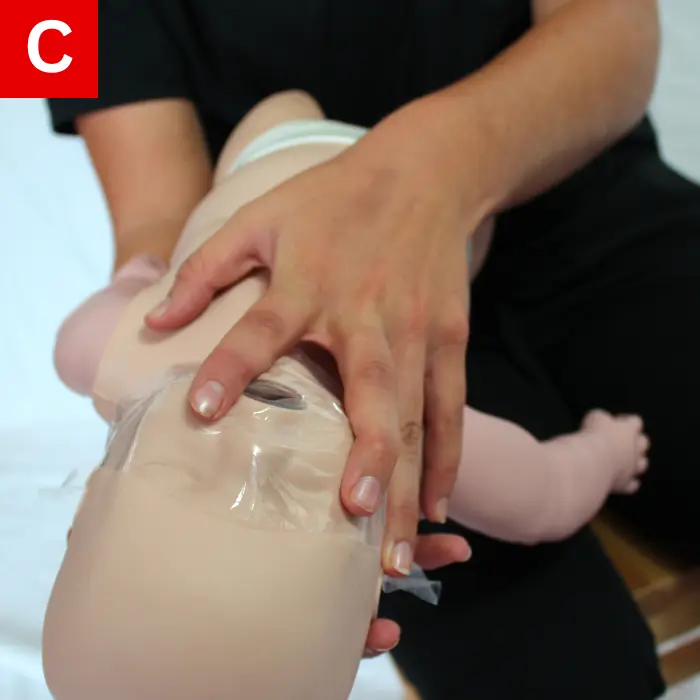
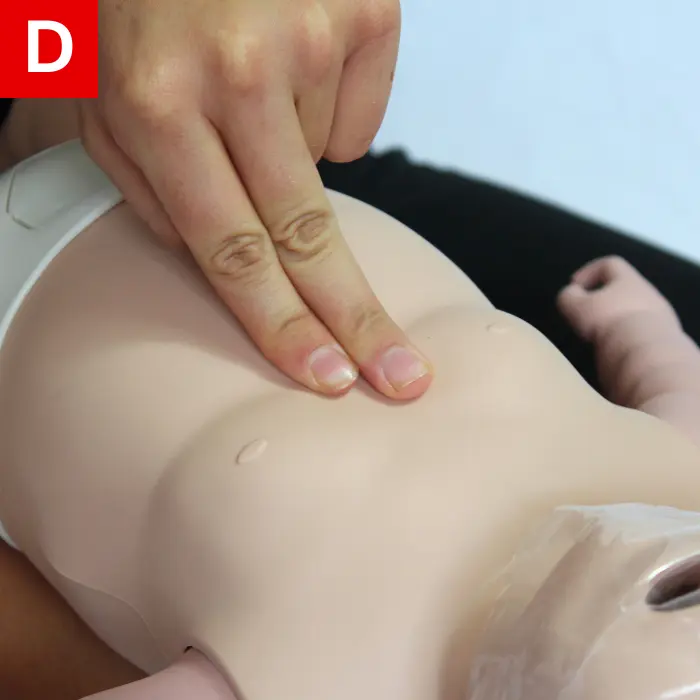
Figure 17
Back Blows and Chest Thrusts in Infants
If an infant is conscious and choking and is less than a year old, execute back blows and thrusts in lieu of abdominal thrusts. See Table 4 for rescue actions for choking in infants. To execute these safely, complete the following steps:
- Hold the infant in your lap.
- Secure the infant’s position by holding them face-down with their head lower than their chest. In this case, the infant should be resting on your forearm. Place your forearm on your thigh (Figure 17a).
- To avoid exerting too much force on the infant’s throat, support the infant’s head and neck using your hand.
- Use the heel of your free hand to deliver five blows on the back in between the infant’s shoulder blades (Figure 17b).
- Move the infant, placing him or her in your other arm, then place this arm on your thigh (Figure 17c).
- Lower the infant’s head so that it is lower than his or her chest.
- Use the heel of your free hand to deliver five compressions on the infant’s chest, over the lower half of the breastbone (Figure 17d). These thrusts should be done every second.
- If this is not successful, place the infant face down on your other forearm and perform the same process (Figure 17b).
- Continue with the steps until the infant is relieved or becomes unconscious.
